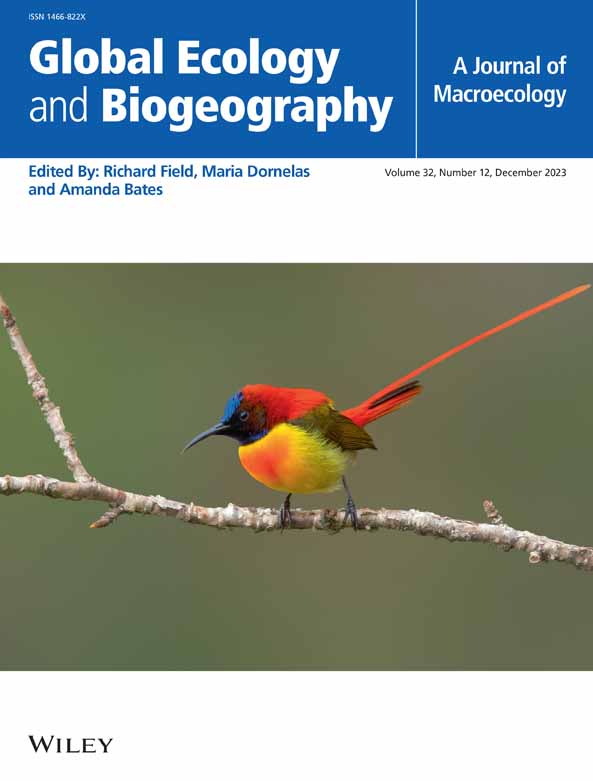Ecology and Biogeography of Sexual Size Dimorphism in Squamates
Abstract
Aim
Sexual size dimorphism (SSD) is widespread in the animal kingdom. The direction and magnitude of SSD differ considerably across taxa, potentially due to different selective forces acting on female and male sizes. We assembled a comprehensive database of mean body sizes for female and male squamate species. We then tested for associations between the degree and direction of sexual size dimorphism and environmental factors, clutch/litter sizes, reproductive modes, substrate types, and species richness (a common measure of interspecific competition).
Location
Global.
Time Period
Present.
Major Taxa Studied
Squamata (Reptilia).
Methods
We studied SSD patterns and their correlates for 11792 squamate species. We also tested the effect of the number of putative competitors on SSD within (~9915 km2) grid cells. We applied phylogenetic path analysis and phylogenetic generalised least squares regression (PGLS) at the species level and applied spatial auto-regressive (SAR) multiple regressions at assemblage levels.
Results
In general, snake females are larger than males, whereas male lizards are larger, on average, than females. Female squamates in general are larger than males in cold regions, while in warm regions, particularly in deserts, males are usually larger than females. SSD became more female-biased (i.e., larger females) as clutch size increased, and viviparous taxa had more female-biased SSD. There was little relationship between the magnitude of SSD and species richness. Sexual size dimorphism did not vary significantly across substrate types.
Main Conclusion
We suggest that the mechanisms driving squamate SSD differ between oviparous and viviparous taxa. The more female-biased SSD in colder regions is likely driven by fecundity selection, while a male bias in warmer regions may be associated with sexual selection. However, we found little evidence to suggest that natural selection for substrates, or resource-based competition, affects squamate sexual size dimorphism and suspect the underlying hypotheses may be flawed, and/or that species richness is a poor measure of the intensity of interspecific competition.


 求助内容:
求助内容: 应助结果提醒方式:
应助结果提醒方式:


